Short Stay Accommodation Taxes: A Solution to Victoria’s Rental Housing Crisis or Tourism Dilemma?
The Victorian Housing Statement has proposed a 7.5% levy on short stay accommodation in Victoria. Designed to promote opening up housing usually used for tourism stays to longer term renters and ease lack of permanent housing in communities, the proposal has ignited debate between various sectors implicated.
The VLGA recently hosted a webinar where a panel of key industry stakeholders convened to discuss the implications of this proposed levy. There was discourse across the panel, highlighting the potential issues when one sector, in this instance tourism, is taxed to fund another, here it is housing. Questions were raised by the panel about whether the conversion of short-stay accommodation is likely to happen in locations where there is a crucial need for long-term housing and whether housing should be regarded as an essential aspect of community infrastructure provided by the government. The investment dynamics between short and long-stay properties was also raised.
What became clear in these discussions is there are risks associated with implementing a levy in isolation. Experience from around the world suggests that effective interventions in short-stay accommodation markets often involve a comprehensive set of measures. These include the registration of short-stay premises, limitations on the number of nights, residency requirements, permits for short-stay accommodations, and caps on the total amount of short stay accommodation in specific areas – a more holistic approach to addressing the issue.
An equally crucial aspect is the establishment of a robust monitoring and compliance regime. This ensures that regulations are not just in place but are effectively enforced. The most successful jurisdictions globally, where short-stay accommodations have been effectively regulated, view housing as essential community infrastructure, with an active role for government.
In Australia, there has been a historical reliance on the housing market to respond to demand for affordable housing. However, it's evident that this approach has not met expectations. Governments at all levels in Australia have been reluctant to embrace public housing as essential community infrastructure in the same way as public roads are provided, and perhaps a shift in this perspective is necessary for positive change.
Returning to the core questions of affordable housing, housing affordability, and housing availability, it's vital to differentiate these concepts. Affordable housing, defined as non-market housing for low-income households meeting specific criteria, is traditionally within the government's purview to ensure availability. In the past we commonly referred to it as public housing.
On the other hand, housing affordability relates to the market's ability to provide housing that low-wage households can afford. Housing availability simply refers to the quantity of housing accessible for rental or purchase. These aspects are intricately tied to housing supply dynamics, construction processes, and overall market conditions.
Understanding and influencing this complex system is a significant challenge. While the proposed levy addresses a specific aspect, it may prove insufficient to tackle the broader issues of housing availability and affordability. Moreover, unintended consequences on the tourism industry, particularly in rural communities, needs careful consideration, as it could impact not just accommodation providers but the entire local tourism economy.
As one panelist suggested during our webinar, to conduct a comprehensive cost/benefit analysis would be useful before committing to the levy.
.
The VLGA acknowledges the Traditional Owners of Country throughout Victoria and recognises their continuing connection to land, waters and community. We pay our respects to the Traditional Owners, their elders past, present and future, and to their cultures.
Disclaimer:
The advice provided by the VLGA is intended to be guidance only. It is not a substitute for legal or formal advice from relevant regulatory bodies.
© Victorian Local Governance Association 2023




